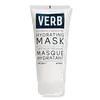What's inside
What's inside
 Key Ingredients
Key Ingredients

 Benefits
Benefits

 Concerns
Concerns

 Ingredients Side-by-side
Ingredients Side-by-side

Water
Skin ConditioningDimethicone
EmollientStearyl Alcohol
EmollientCetyl Alcohol
EmollientGlycerin
HumectantCetyl Esters
EmollientBehentrimonium Chloride
PreservativeIsopropyl Myristate
EmollientQuaternium-80
Stearamidopropyl Dimethylamine
EmulsifyingAmodimethicone
Orbignya Oleifera Seed Oil
EmollientParfum
MaskingCitric Acid
BufferingTrideceth-12
EmulsifyingIsopropyl Alcohol
SolventPolyquaternium-10
Polyquaternium-67
Caprylyl Glycol
EmollientPropylene Glycol
HumectantMyristyl Alcohol
EmollientSodium Acetate
BufferingChlorphenesin
AntimicrobialPhenoxyethanol
PreservativeCetrimonium Chloride
AntimicrobialButylphenyl Methylpropional
PerfumingLimonene
PerfumingLinalool
PerfumingHydroxycitronellal
PerfumingWater, Dimethicone, Stearyl Alcohol, Cetyl Alcohol, Glycerin, Cetyl Esters, Behentrimonium Chloride, Isopropyl Myristate, Quaternium-80, Stearamidopropyl Dimethylamine, Amodimethicone, Orbignya Oleifera Seed Oil, Parfum, Citric Acid, Trideceth-12, Isopropyl Alcohol, Polyquaternium-10, Polyquaternium-67, Caprylyl Glycol, Propylene Glycol, Myristyl Alcohol, Sodium Acetate, Chlorphenesin, Phenoxyethanol, Cetrimonium Chloride, Butylphenyl Methylpropional, Limonene, Linalool, Hydroxycitronellal
Water
Skin ConditioningStearyl Alcohol
EmollientIsopropyl Palmitate
EmollientCetyl Alcohol
EmollientStearamidopropyl Dimethylamine
EmulsifyingDicetyldimonium Chloride
EmulsifyingAzadirachta Indica Seed Oil
Skin ConditioningHelianthus Annuus Seed Oil
EmollientArgania Spinosa Kernel Oil
EmollientHydrolyzed Adansonia Digitata Seed Extract
Pleiogynium Timoriense Fruit Extract
Skin ConditioningPodocarpus Elatus Fruit Extract
Skin ConditioningTerminalia Ferdinandiana Fruit Extract
AntioxidantHydrolyzed Quinoa
Skin ConditioningHydrolyzed Vegetable Protein
Skin ConditioningGlycerin
HumectantBehentrimonium Chloride
PreservativePropanediol
SolventArachidyl Alcohol
EmollientTocopheryl Acetate
AntioxidantButylene Glycol
HumectantEthylhexylglycerin
Skin ConditioningPhenoxyethanol
PreservativeParfum
MaskingWater, Stearyl Alcohol, Isopropyl Palmitate, Cetyl Alcohol, Stearamidopropyl Dimethylamine, Dicetyldimonium Chloride, Azadirachta Indica Seed Oil, Helianthus Annuus Seed Oil, Argania Spinosa Kernel Oil, Hydrolyzed Adansonia Digitata Seed Extract, Pleiogynium Timoriense Fruit Extract, Podocarpus Elatus Fruit Extract, Terminalia Ferdinandiana Fruit Extract, Hydrolyzed Quinoa, Hydrolyzed Vegetable Protein, Glycerin, Behentrimonium Chloride, Propanediol, Arachidyl Alcohol, Tocopheryl Acetate, Butylene Glycol, Ethylhexylglycerin, Phenoxyethanol, Parfum
Ingredients Explained
These ingredients are found in both products.
Ingredients higher up in an ingredient list are typically present in a larger amount.
This ingredient is a preservative and often used for it's anti-static properties. You'll most likely see this ingredient in hair conditioners.
It does not cause irritation or sensitization in leave-on products at 1-5%.
Cetyl Alcohol is a fatty alcohol. Fatty Alcohols are most often used as an emollient or to thicken a product.
Its main roles are:
Though it has "alcohol" in the name, it is not related to denatured alcohol or ethyl alcohol.
The FDA allows products labeled "alcohol-free" to have fatty alcohols.
Learn more about Cetyl AlcoholGlycerin is already naturally found in your skin. It helps moisturize and protect your skin.
A study from 2016 found glycerin to be more effective as a humectant than AHAs and hyaluronic acid.
As a humectant, it helps the skin stay hydrated by pulling moisture to your skin. The low molecular weight of glycerin allows it to pull moisture into the deeper layers of your skin.
Hydrated skin improves your skin barrier; Your skin barrier helps protect against irritants and bacteria.
Glycerin has also been found to have antimicrobial and antiviral properties. Due to these properties, glycerin is often used in wound and burn treatments.
In cosmetics, glycerin is usually derived from plants such as soybean or palm. However, it can also be sourced from animals, such as tallow or animal fat.
This ingredient is organic, colorless, odorless, and non-toxic.
Glycerin is the name for this ingredient in American English. British English uses Glycerol/Glycerine.
Learn more about GlycerinParfum is a catch-all term for an ingredient or more that is used to give a scent to products.
Also called "fragrance", this ingredient can be a blend of hundreds of chemicals or plant oils. This means every product with "fragrance" or "parfum" in the ingredients list is a different mixture.
For instance, Habanolide is a proprietary trade name for a specific aroma chemical. When used as a fragrance ingredient in cosmetics, most aroma chemicals fall under the broad labeling category of “FRAGRANCE” or “PARFUM” according to EU and US regulations.
The term 'parfum' or 'fragrance' is not regulated in many countries. In many cases, it is up to the brand to define this term.
For instance, many brands choose to label themselves as "fragrance-free" because they are not using synthetic fragrances. However, their products may still contain ingredients such as essential oils that are considered a fragrance by INCI standards.
One example is Calendula flower extract. Calendula is an essential oil that still imparts a scent or 'fragrance'.
Depending on the blend, the ingredients in the mixture can cause allergies and sensitivities on the skin. Some ingredients that are known EU allergens include linalool and citronellol.
Parfum can also be used to mask or cover an unpleasant scent.
The bottom line is: not all fragrances/parfum/ingredients are created equally. If you are worried about fragrances, we recommend taking a closer look at an ingredient. And of course, we always recommend speaking with a professional.
Learn more about ParfumPhenoxyethanol is a preservative that has germicide, antimicrobial, and aromatic properties. Studies show that phenoxyethanol can prevent microbial growth. By itself, it has a scent that is similar to that of a rose.
It's often used in formulations along with Caprylyl Glycol to preserve the shelf life of products.
We don't have a description for Stearamidopropyl Dimethylamine yet.
Stearyl Alcohol is a type of fatty alcohol from stearic acid. It is a white, waxy compound used to emulsify ingredients.
Fatty Alcohols are most often used as an emollient or to thicken a product. Emollients help soothe and hydrate the skin by trapping moisture.
They are usually derived from natural fats and oils and therefore do not have the same drying or irritating effect as solvent alcohols. FDA allows products labeled "alcohol-free" to have fatty alcohols.
Learn more about Stearyl AlcoholWater. It's the most common cosmetic ingredient of all. You'll usually see it at the top of ingredient lists, meaning that it makes up the largest part of the product.
So why is it so popular? Water most often acts as a solvent - this means that it helps dissolve other ingredients into the formulation.
You'll also recognize water as that liquid we all need to stay alive. If you see this, drink a glass of water. Stay hydrated!
Learn more about Water